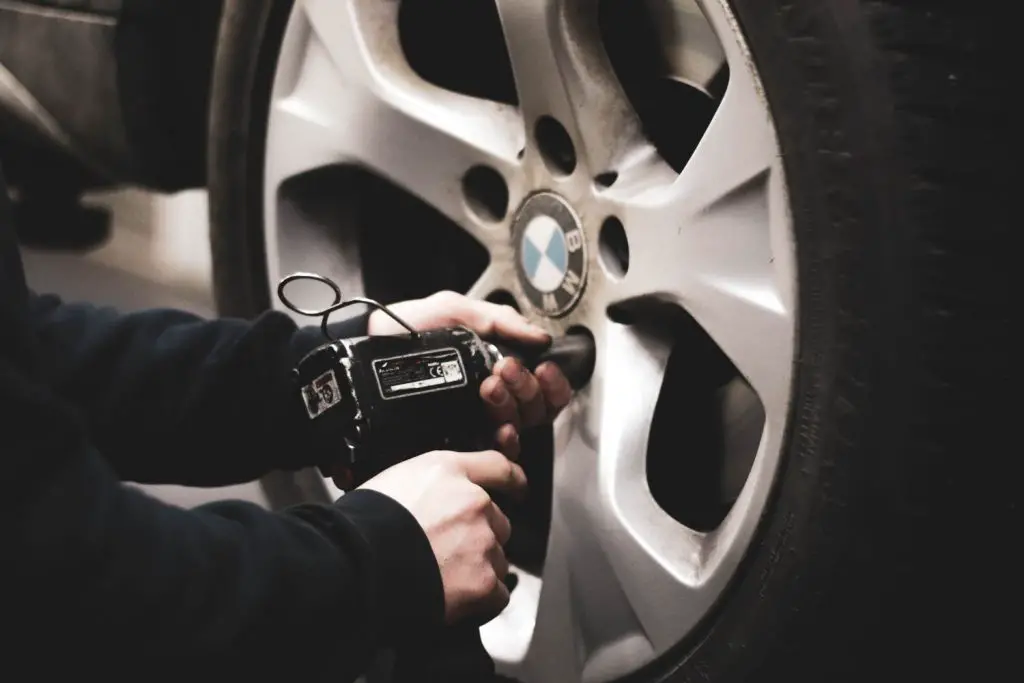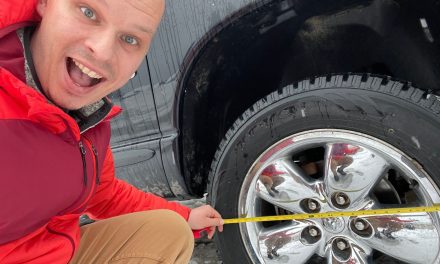The frequency of tire rotations depends on several factors, including the type of vehicle you drive, how you drive it, and the conditions of the roads you typically encounter. In general, though, it’s a good idea to rotate your tires every 5,000 to 8,000 miles. This will help ensure even wear and tear, and extend the life of your tires.
Of course, always consult your owner’s manual or a professional mechanic to get a specific recommendation for your vehicle.
Now, while that is just a rule of thumb, we should quickly talk about the different factors that can change how often you should be rotating your tires! Then we will also be answering more questions you likely have about rotating your cars tires (we know you want to take care of it).

1. You should rotate your tires more often when you have softer tires
Tires made with softer rubber compounds will wear down faster than harder ones. This is common in tires like winter tires or all-season tires. Harder tires come in the form of summer tires mainly.
So, if you live in a place where you need softer tires in the winter for traction, but it gets hot in the summer you will want to keep a closer eye on your tires, and likely will want to rotate them more often during those summer months.
This will help keep your softer tires from wearing unevenly, and help them keep traction when you need them again in the colder months of the year!
2. AWD and 4WD vehicles should have their tires rotated more often
If you have an all-wheel drive or four-wheel drive vehicle, you’ll need to rotate your tires more frequently (or at least closer to the 5,000 miles). That’s because the power of these types of vehicles is distributed differently, and that can cause your tires to wear down unevenly depending on the corner they are on, but also if they are on the front or back.
Tires with different wear can affect your AWD system, and can actually cause damage due to working the transfer case too much. This is because each tire is technically a different size, meaning the transfer case has to be working constantly to keep up with this.
What is done when you rotate your tires?
Rotating your tires is simply the process of moving them from their current position to a different position on your vehicle.
The most common type of rotation is the “forward cross.” This is when the front tires are moved to the back but on the opposite side of the car. So, if your right front tire is moved to the back left position, your left front tire would be moved to the back right position. The opposite would then happen for the tires that were on the rear of the vehicle moving forward to their opposite side.
The other common rotation is the “backward or rearward cross.” This is when the back tires are moved to the front but on the same side of the car. So, if your right rear tire is moved to the front right position, your left rear tire would be moved to the left-right position.
There are other types of rotations, but these are the two most common.
How much does it cost to rotate your tires?
Tire rotation typically costs between $20 and $40 ($5-$10 or so a wheel), depending on the type of vehicle you have and where you have it done. Many tire stores and auto service shops will rotate your tires for free if you buy a new set of tires from them.
If you do it yourself, you’ll just need to purchase a lug wrench and jack, which can be found at most auto parts stores. Rotating your tires is a pretty simple process that just about anyone can do, so there’s no need to pay someone else to do it for you!
What happens if you don’t rotate your tires?
If you never rotate your tires, they will eventually wear down certain tires on your vehicle to the point where they need to be replaced, while the other tires are perfectly fine.
This can cost you a ton of money, as you will likely need to replace all four at once, but also because it could cause damage to the vehicle itself.
Another thing is that shops will generally check the components on your vehicle during the rotation of your tires. They might be able to catch culprits that are causing your tires to wear unevenly. Let’s talk about that quickly!
What can cause your tires to wear unevenly?
There are a few things that can cause your tires to wear unevenly, and it’s important to be aware of them so you can take steps to fix the issue.
The main reason why tires will wear unevenly comes down to the design of vehicles in the first place.
Most vehicles run their tires either exclusively, or mainly on either the front or the rear of the vehicle. This causes the tires that are getting the power to wear quicker than the tires that do not get power.
Yes, even AWD vehicles are primarily either FWD or RWD. The vehicle then sends power when it needs it to the opposite side of the vehicle.
Another common culprit that is easy to fix, is incorrect tire pressure. This can cause your tires to wear down on the sides, as well as make them more susceptible to flats. You should check your tire pressure at least once a month, and adjust as needed.
A common issue is alignment. This is when your tires are not pointing in the same direction. This can cause them to wear down on one side more than the other. You should get your alignment checked at least once a year, but more often if you notice your tires wearing unevenly.
You might also find uneven wear in your tires if you are running a vehicle in four-wheel-drive all the time. You should only really use four-wheel drive when you need it, as it can cause your tires to wear down unevenly.
Try to limit your use of four-wheel drive, and if you do use it a lot, make sure to rotate your tires more frequently.
Finally, one other thing that can cause your tires to wear unevenly is suspension problems. This is when your shocks or struts are not working properly and can cause a bumpy ride.
You might notice this if you feel every little crack in the road. If you suspect your suspension is not working properly, you should take it to a mechanic to have it checked out.

When should you not rotate your tires?
If you have just gotten new tires, you should not rotate them for the first 1000 miles. This is because they need to be “broken in.” Rotating them too soon can cause uneven wear.
You should also not rotate your tires if they are of different sizes or types. For example, you might have all-season tires on the front of your vehicle and winter tires on the back.
In this case, you would not want to rotate them because they are made for different purposes. You should look at completely replacing your tires so that all corners have the same tire on them.
Another reason you shouldn’t rotate your tires is if your tires are too worn. At some point, rotating your tires will not help and you will need to replace them due to too low of tire tread.
Shops in general will not rotate any tires that get to a certain point of wear, and might even require you to sign a waiver before allowing to get your vehicle back, as some tires can be too dangerous for a shop to allow back on the road.
Does rotating your tires affect alignment?
Rotating your tires, in general, should not affect your alignment at all. Your alignment is determined by things like your suspension, and not the tires themselves.
If you are finding that after you rotate your tires, and your alignment is off, you might have a damaged wheel, and that is not going to be resolved by getting an alignment.
Can you rotate your tires too often?
You cannot rotate your tires too often! That said, if you are someone that likes to rotate your tires often, you should make sure that you are doing it on a regular schedule, rather than sporadically.
This is because you may find that you are keeping one set of two tires on one side too long after switching them, and this can defeat the purpose.
Make sure to log when you rotate your tires to make sure you are doing it evenly.
Will tire rotation stop vibration?
If your tires are unbalanced or out of alignment, rotating them will not fix the issue and the vibration will continue. Rotating your tires can help with vibration if the issue is that your front and rear tires are wearing differently and need to even out.
However this is not a true fix, and replacing your tires, or at the very least getting the wheels balanced should help out with this problem.
Conclusion
Rotating your tires is important to extend the life of your tires, and can also save you money in the long run.
Be sure to rotate your tires every 5,000 to 8,000 miles, or more often if you have softer tires, an AWD or 4WD vehicle, or if you notice your tires wearing unevenly. Taking these steps will help keep you and your car on the road!





